
Discovery from space shows that the pyramids were built using water
A landmark discovery on an ancient branch of the River Nile may have solved the mystery of how the pyramids in Egypt were built centuries ago. The now dried-out waterway, which once ran through Giza might have been used to transport the materials that were used to construct the pyramids. The proximity to the waterway might also suggest why there is such a cluster of pyramids in that particular area of Cairo, as the large amount of water would have been able to support the various building blocks needed for the colossal structures. The discovery was made by Dr Eman Ghoneim who used radar satellite data from space to study the Nile Valley which showed an "invisible world of information beneath the surface." Ghoneim presented her research to the 13th Congress of Egyptologists earlier this year. Speaking to IFLScience Ghoneim said: "The length probably was really, really long, but also the width of this branch in some areas was huge. We're talking about half a kilometer or more in terms of width, which is something that is equivalent to today's Nile course width. So it wasn't a small branch. It was a major branch.” The defunct waterway has been dubbed the Ahramat Branch and ran from Giza to Faiyum and amazingly passed through 38 different pyramid sites. However, without confirmation of whether the river was active during the Old and Middle Kingdoms, around 4,700 years ago, cannot fully determine if water was used to help build the pyramids. One indication that it could have been used is that according to Ghoneim these pyramids were "located exactly at the bank of the branch that we found" which could mean that they were "valley temples" which acted like ancient ports. The research might not just unlock the secrets of the pyramids but it could also uncover parts of ancient Egypt that have long been lost as towns disappeared when the Nile naturally migrated. Ghoneim added: "As branches disappeared, Ancient Egyptian cities and towns also silted up and disappeared, and we have no clue actually where to find them." Sign up to our new free Indy100 weekly newsletter Have your say in our news democracy. Click the upvote icon at the top of the page to help raise this article through the indy100 rankings.
2023-12-03 02:15

A huge solar storm is hitting Earth and could cause internet blackouts
A solar storm predicted to hit Earth on Friday (December 1) may cause internet blackouts, according to forecasters. Radio and GPS could also be affected due to the solar storm, also known as a coronal mass ejection (CME), which is caused by interference with Earth’s magnetic field. "A Direct Hit! The impressive #solarstorm launched in the Earth-strike zone has been modeledmodelled by NASA," space weather physicist Dr Skov posted on Twitter/X. "The storm is predicted to hit Earth by midday December 1. Along with two earlier storms already en route means we have a 1,2,3-punch. If the magnetic field is oriented correctly, expect #aurora to reach deep into mid-latitudes." She added: "Amateur #radio & #GPS reception issues are likely, especially on Earth's nightside. G3+ conditions are possible with this storm series." A solar storm can have substantial effects on the Earth, taking place when the sun emits powerful bursts of energy which come from solar flares and CME that contain charged plasma. During which, a stream of an electromagnetic field is directed towards Earth and this causes the aurora borealis. Three solar storms were predicted to advance towards Earth – and some may merge, resulting in increased disruptions to Earth’s magnetic field, according to The US National Oceanic and Atmospheric Administration (NOAA). “Along with two earlier storms already en route [this] means we have a 1,2,3-punch,” Dr Skov said. Consequently, she added there are “excellent chances” of strong G3-level magnetic storms and auroras on Earth. The way the strength of a solar storm is measured is with the letter G and then a number system from 1-5 (1 being the weakest, to 5 being the strongest). So a G3 level storm means radio, internet and GPS could be affected due to the strength of these events. Solar storms are also known to cause electrical grids and knock out satellites, depending on their strength. Meanwhile, experts have warned the solar storm thought to occur today may impact communication systems in high latitudes. “With 3 CMEs already inbound, the addition of a 4th, full halo CME has prompted SWPC forecasters to upgrade the G2 Watch on 01 Dec to a G3 Watch. This faster-moving halo CME is progged to merge with 2 of the 3 upstream CMEs, all arriving at Earth on 01 Dec,” the NOAA said. “G3 (strong) conditions are now likely on 01 Dec,” it added. How to join the indy100's free WhatsApp channel Sign up to our free Indy100 weekly newsletter Have your say in our news democracy. Click the upvote icon at the top of the page to help raise this article through the indy100 rankings.
2023-12-01 23:18

Is It Time to Change How We Talk About 1.5C?
COP28 Daily Reports: Sign up for the Green Daily newsletter for comprehensive coverage of the climate summit right
2023-12-01 13:25
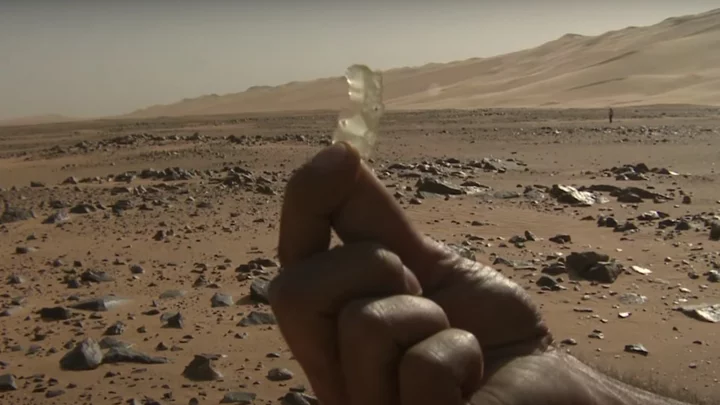
Mysterious yellow glass found in Libyan desert 'caused by meteorite', say scientists
A meteorite which smashed into earth 29m years ago may be behind a strange yellow glass found in a certain part of the desert in southeast Libya and southwestern Egypt, according to researchers. The Great Sand Sea Desert stretches over about 72,000 square kilometres across the two countries, and is the only place where the mysterious yellow material is found on Earth. Researchers first described it in a 1933 scientific paper, calling it Libyan desert glass. Mineral collectors have long valued it for its beauty and mysterious qualities – and it was even found in a pendant in Egyptian pharaoh Tutankhamun’s tomb. The origin of the glass has been a mystery for centuries, but researchers writing in the journal De Gruyter used new advanced microscopy technology to get answers. Elizaveta Kovaleva, a lecturer at the University of the Western Cape, wrote that the glass was caused by “the impact of a meteorite on the Earth's surface”. Writing in The Conversation, she said: “Space collisions are a primary process in the solar system, as planets and their natural satellites accreted via the asteroids and planet embryos (also called planetesimals) colliding with each other. These impacts helped our planet to assemble, too.” She said: “We studied the samples with a state-of-the-art transmission electron microscopy technique, which allows us to see tiny particles of material – 20,000 times smaller than the thickness of a paper sheet. “Using this super-high magnification technique, we found small minerals in this glass: different types of zirconium oxide (ZrO₂).” One of the types of this mineral found in the glass can only form at temperatures between 2,250 celsius and 2,700 celsius. Toasty. Kovaleva said: “Such conditions can only be obtained in the Earth's crust by a meteorite impact or the explosion of an atomic bomb.” However, she wrote, there are just as many questions as there are answers. The nearest known meteorite craters are too far away and too small to be the cause of that much glass all concentrated in one part of the world. “So, while we've solved part of the mystery, more questions remain. Where is the parental crater? How big is it – and where is it? Could it have been eroded, deformed or covered by sand?” Safe to say, the scientists will keep on looking until they have the answers. How to join the indy100's free WhatsApp channel Sign up to our free indy100 weekly newsletter Have your say in our news democracy. Click the upvote icon at the top of the page to help raise this article through the indy100 rankings.
2023-12-01 02:17
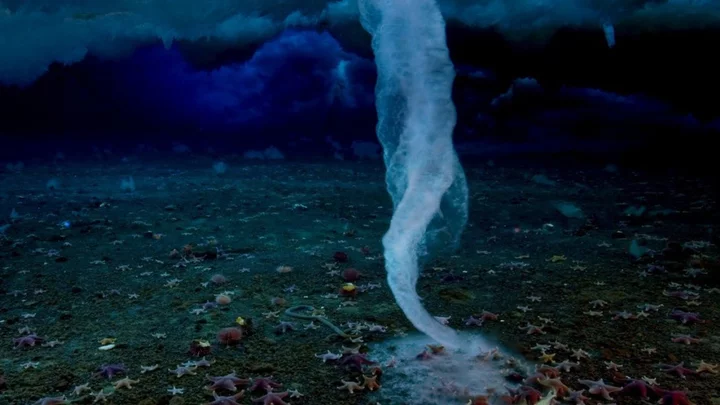
Terrifying 'ice finger of death' killing everything it touches caught on camera
Life forms surviving under sea ice have it pretty tough at the best of times, but they face a threat rarely caught on camera which is as terrifying as anything on the planet. BBC crew captured a brinicle on film for the first time for the BBC series Frozen Planet in 2011 and the natural feature resembling a deathly ice finger is the stuff of nightmares. A brinicle forms under sheets of sea ice, pushing downwards and posing existential risks to life forms on the ocean floor. As shown in footage captured for BBC Earth Unplugged, the natural formations can trap creatures and prove deadly – but how do they form? Well, salty water surrounding sea ice can form channels and inlets within blocks of ice. Ice then protrudes through the salty water and heads downwards as the salty water is heavier than the water around it. The salt water also freezes at a lower temperature to the water around it, meaning that it freezes everything it touches as it descends. Safe to say, if you see one of these heading towards you, you’d better start praying. It comes after it was discovered that the world’s biggest iceberg is drifting away from the Antarctic after having been grounded there for more than 30 years. The iceberg, which has the catchy name A23a, split from the Antarctic’s giant Filchner Ice Shelf in 1986, but has been stuck to the ocean floor since shortly after that time. Now, according to the British Antarctic Survey, it is on the move. Sign up for our free Indy100 weekly newsletter How to join the indy100's free WhatsApp channel Have your say in our news democracy. Click the upvote icon at the top of the page to help raise this article through the indy100 rankings
2023-12-01 01:52

There is a scientific reason some people can't stand Brussels sprouts
Christmas is approaching, and that means so are the overcooked, bitter, totally unnecessarily mountains of Brussels sprouts that your family insists on serving. Every, damn, time. Well, that’s how some people might see it, anyway. The fact is, love them or hate them, Brussels sprouts are always going to be controversial – a little like that awkward uncle who rocks up every Christmas and starts a big family row. But it turns out that sprout-haters have actually got a very sound, scientific excuse for their picky eating on Christmas day – and it's all to do with genetics. Stacey Lockyer, nutrition scientist at the British Nutrition Foundation, told Huffpost: “Brussels sprouts are one of a group of vegetables known as cruciferous vegetables or Brassica which also includes broccoli, cabbage, cauliflower and kale. “Brassica contain high amounts of compounds called glucosinolates which, when metabolised in the body, give them their characteristic sharp or bitter taste.” An area covering 3,240 football pitches is dedicated to growing Brussels sprouts in the UK. If you were to line them up individually, they'd stretch from London to Sydney. Despite this, some people are just genetically predisposed to hate that bitter taste. Lockyer added: “Whether we like or dislike certain foods is determined by different factors (such as previous experiences with a food and number of exposures), but some studies have demonstrated that the perception of bitterness of cruciferous vegetables is linked to genetic differences in taste receptors on the tongue.” In fact, a 2011 study by Cornwall College found sprouts contain a chemical which only tastes bitter to people who have a variation of a certain gene. The research found that around 50 percent of the world’s population have a mutation on this gene. About half of us just don’t taste the bitterness usually associated with sprouts, and therefore actually like them. (Imagine!) Nonetheless, hope is not lost. A University of Warwick study found that as we get older, we’re more likely to like sprouts. Research fellow Lauren Chappell said in a blog post: "Sulphur is responsible for the bitter sprout taste. As we age, we lose tastebuds, which can make them more palatable—potentially why adults who hated sprouts as children now embrace them in seasonal dishes.” Which means, regrettably, that your grandparents were probably right all along. How to join the indy100's free WhatsApp channel Sign up to our free indy100 weekly newsletter Have your say in our news democracy. Click the upvote icon at the top of the page to help raise this article through the indy100 rankings.
2023-12-01 01:17

There's a reason why we've never found fire anywhere other than on Earth
Fire might seem like one of the most elemental things in the natural world, but it’s never been found anywhere other than Earth. It’s because the creation of fire relies on very specific circumstances. In fact, if fire was ever found on another planet, it would be a good indicator of the possible existence of life. Oxygen is key to fire, and while it’s particularly prevalent in the universe, Earth’s atmosphere features an abundance of the element in the right molecular form for it to form. Even then, the way the Earth’s atmosphere has changed over its lifespan is also crucial to conditions being fostered where fire can form [via IFLScience]. For millions of years, in fact, there wasn’t enough oxygen in the atmosphere to create fire. Before the Middle Ordovician period, when there was far less oxygen, there’s no evidence of fire whatsoever. Most of the fuel that fire needs is also directly related to life existing on the planet – think wood, oil and coal. Without life, there isn’t an awful lot of fuel going around, which just shows why the existence of fire on another planet would be a very promising sign when it comes to exploring the universe for life. Despite fire being much rarer in the universe than most might think, it was previously confirmed that humans in Europe may have mastered fire long before we previously thought. According to a study published in Scientific Reports, humans made the discovery around 245,000 years ago, up to 50,000 years earlier than scientists believed, Researchers studied samples from the Valdocarros II, a huge archaeological site found east of Madrid, Spain. Using chemical analysis, they found certain compounds that show things were burnt by fire in "organised" social events, rather than through accidents or wildfires. Sign up for our free Indy100 weekly newsletter How to join the indy100's free WhatsApp channel Have your say in our news democracy. Click the upvote icon at the top of the page to help raise this article through the indy100 rankings
2023-12-01 00:57
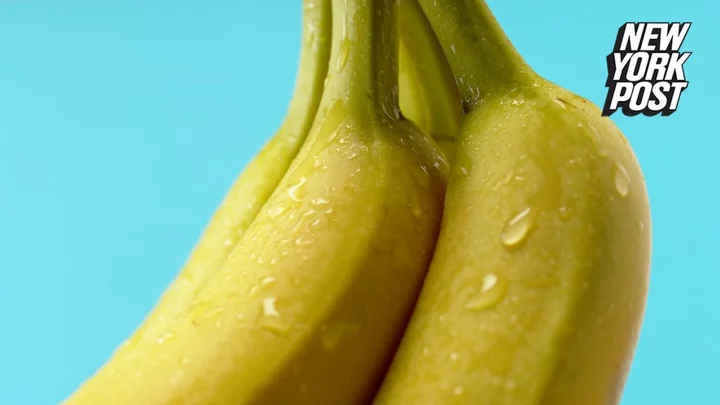
Using banana skins as an ingredient has unexpected benefits
A study last year found that every time you throw away a banana peel, you're missing out on a great snack. The study, published in ACS Food Science & Technology, found that if banana peels are blanched, dried, and ground into a flour, they can be turned into baked goods that taste just as good as wheat-based products. And it turns out it's actually really food for you. Consuming products made from banana peel means you consume minerals and cancer-fighting minerals. Sugar cookies that were enriched with banana peels not only tasted the same as peel-free sugar cookies, but contained much more fibre, magnesium, potassium, and antioxidant compounds. In 2021, a study on banana peel cake found the yellow skin of the fruit provided a natural food colour as well as a nutritional boost. Whilst a 2016 study found that substituting up to 10 per cent of wheat flower with banana peel flour can enrich baked bread with higher protein, carbohydrate, and fat contents. Not only is it a healthy food option, it also helps reduce food waste! And the same goes for other fruits too, such a mango skin, what was found to boost a cake's antioxidant properties and improve its flavour. Just make sure to add the right amount of banana peel to your bakes and makes. Adding too much banana peel flour did result in the study's cookies going somewhat brown and hard, possibly from all the extra fibre. 7.5 percent of banana peel flour seems to be the sweet spot, with the texture and taste hitting an appealing balance. So maybe reconsider next time you go to thrown a banana skin away. Sign up to our free Indy100 weekly newsletter Have your say in our news democracy. Click the upvote icon at the top of the page to help raise this article through the indy100 rankings. How to join the indy100's free WhatsApp channel
2023-12-01 00:55

Pioneering drug designed to extend the lives of dogs just made a breakthrough
Our canine companions could soon be enjoying much longer lifespans, if a drug which claims it can extend dogs’ lives eventually gets approved. The drug, made by a tech firm in California, just cleared a vital hurdle to doing just that, after it got partial approval by regulators in the US. Loyal, a San Francisco-based company founded in 2020, has been researching how it can increase dogs’ lifespans – in particular larger breeds, which tend to die younger. Large and “giant” breeds tend to live to between eight and 12 years. Smaller dogs, such as Chihuahuas, can keep going to the ripe old age of 20. Loyal’s main product, the catchily-titled LOY-001, is designed not only to extend dogs’ lives but also maintain their quality of life. Now, it has passed the “reasonable expectation of effectiveness” test, set by regulators at the US’ Food and Drug Administration. Loyal’s chief executive, Celine Halioua, said: "Loyal was founded with the ambitious goal of developing the first drugs to extend healthy lifespan in dogs. "This milestone is the result of years of careful work by the team. We'll continue to work just as diligently to bring this and our other longevity programs through to FDA approval." Selective breeding of dogs has caused higher levels of hormones which help the animals grow faster. That is also believed to reduce their lifespan, the company said. Big dogs tend to have more of this hormone than their smaller counterparts. Animal rights activists are not yet convinced. Some experts fear it will only serve to extend animals’ suffering. Loyal, on the other hand, says the drug aims to treat doggy diseases which are associated with ageing through preventing them, rather than waiting for the animals to get sick before treating them. The company said that the drug could be available to US customers as early as 2026. So that’s plenty of time for walkies between now and then. How to join the indy100's free WhatsApp channel Sign up to our free indy100 weekly newsletter Have your say in our news democracy. Click the upvote icon at the top of the page to help raise this article through the indy100 rankings.
2023-11-30 19:50
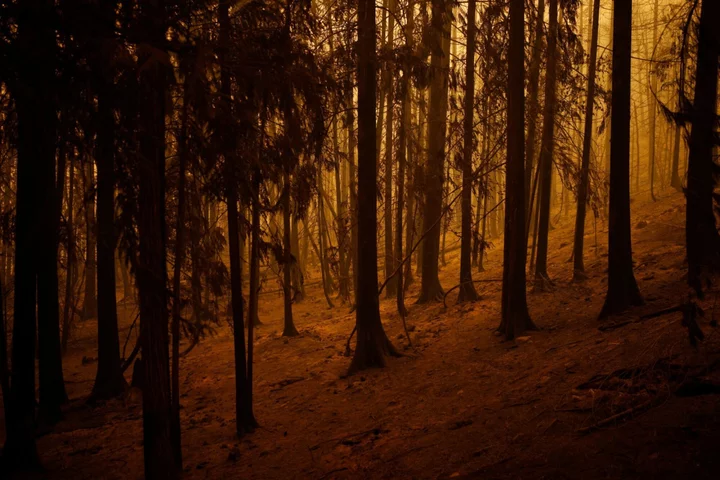
UN Declares 2023 Hottest Year Ever as Crucial Climate Summit Starts
COP28 Daily Reports: Sign up for the Green Daily newsletter for comprehensive coverage of the climate summit right
2023-11-30 18:47
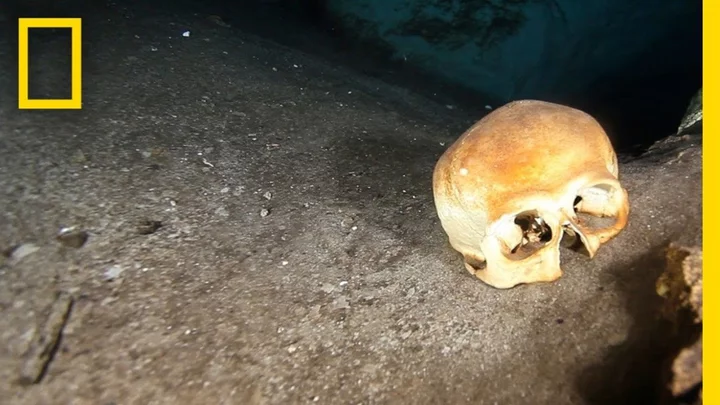
Disturbing cache of elongated human skulls discovered in flooded Mexican sinkhole
When archaeologists explored an underwater cavern in southern Mexico in 2014, they were shocked by what they found. The cavern is known as Sac Uayum, and is located in Mexico’s Yucatán peninsula. It is technically a cenote – a natural pit that comes about after limestone bedrock collapses, exposing groundwater beneath. Local villagers were said to be terrified of the spot, because pits like this were sometimes used by the ancient Maya for sacrificial offerings. Archaeologist Bradley Russell, from College of St Rose, and a group of divers scaled down roughly 20 metres into the unknown. Inside the pit were two chambers with human bones and skulls scattered across the floors of each. The skulls were elongated, as part of an ancient practice that is thought to have involved flattening people’s heads during infancy. Archaeologists still don’t know why the ancient culture did this – but it ain't pretty. The cenote sits just outside the ruins of the ancient Maya city of Mayapán, and the researchers think this shows that, like the modern day locals, the ancient Mayans kept their distance too. Local legend says that Sac Uayum is guarded by a feathered, horse-headed serpent. Older residents of the nearby village of Telchaquillo tell stories of people seeing the serpent perching in a tree, leaping up, spinning around three times, and diving into the water. Russell explained to National Geographic that the sinkhole is said to be “evil”. “To this day, people do not get drinking water from that cenote, it is generally considered taboo. “It’s off-limits, people do not let their children plan near there and there’s a lot of beliefs around this cenote having evil forces or malevolent forces associated with it. “Cenotes are important because the main access to the water that you get is through these sinkholes. “They are also believed to be access to the Mayan underworld and the homes of Gods. “Mayapan is a large city, it’s incredibly dense, there’s nothing like it in the classic period, it’s incredibly dense for Maya history, there’s nothing quite like it.” He added that the location of Sac Uayum – south of Mayapan – is a clue as to what was going on. In Maya beliefs, south is the direction associated with the underworld. Alternatively, Russell also suggested they could have been plague victims. "You wouldn't want them near the rest of the population. And you wouldn't want to drink the water either.” How to join the indy100's free WhatsApp channel Sign up to our free indy100 weekly newsletter Have your say in our news democracy. Click the upvote icon at the top of the page to help raise this article through the indy100 rankings.
2023-11-30 03:59

Water discovered leaking from Earth's crust into the planet's core
There is much we still don’t know about the inside of our planet – but scientists recently discovered water is slowly leaking down there from the surface. It’s not a simple journey. The liquid is dripping down descending tectonic plates, before eventually reaching the core after a 2,900 kilometre journey. And while the process is slow, it has over billions of years formed a new surface between the molten metal of the outer core and the outer mantle of the Earth. In a new study, scientists at Arizona State University have said the water is triggering a chemical reaction, creating the new layer, which is “few hundred kilometres thick”. (That’s “thin” when it comes to the inner layers of the Earth.) “For years, it has been believed that material exchange between Earth's core and mantle is small. Yet, our recent high-pressure experiments reveal a different story. “We found that when water reaches the core-mantle boundary, it reacts with silicon in the core, forming silica," co-author Dr Dan Shim wrote. “This discovery, along with our previous observation of diamonds forming from water reacting with carbon in iron liquid under extreme pressure, points to a far more dynamic core-mantle interaction, suggesting substantial material exchange.” So what does it mean for all of us up on the surface? The ASU release said: “This finding advances our understanding of Earth's internal processes, suggesting a more extensive global water cycle than previously recognised. “The altered ‘film’ of the core has profound implications for the geochemical cycles that connect the surface-water cycle with the deep metallic core.” How to join the indy100's free WhatsApp channel Sign up to our free indy100 weekly newsletter Have your say in our news democracy. Click the upvote icon at the top of the page to help raise this article through the indy100 rankings.
2023-11-30 03:26
